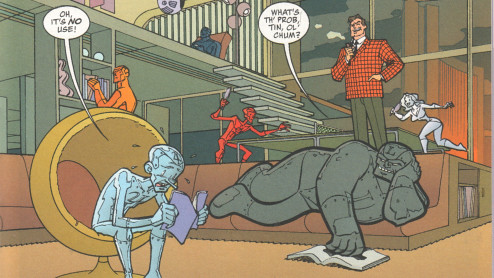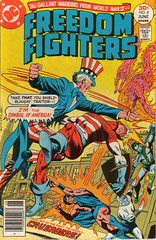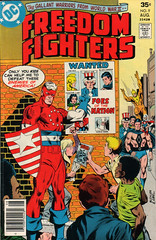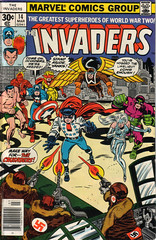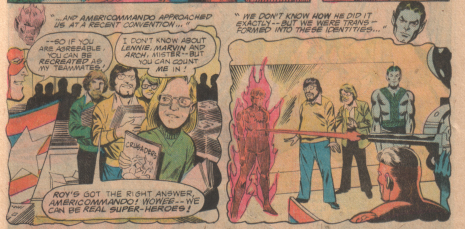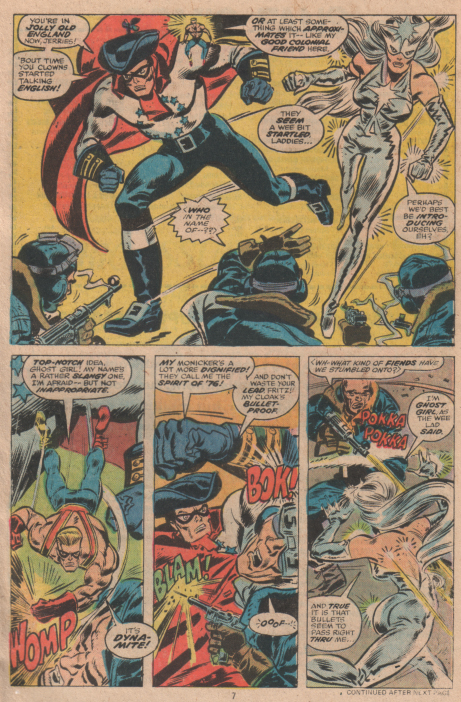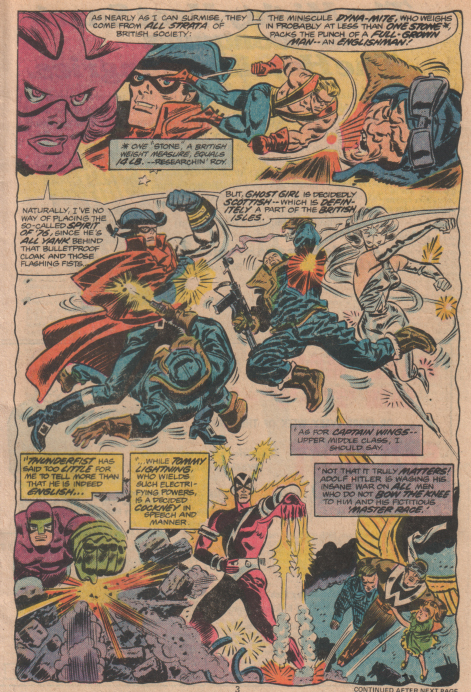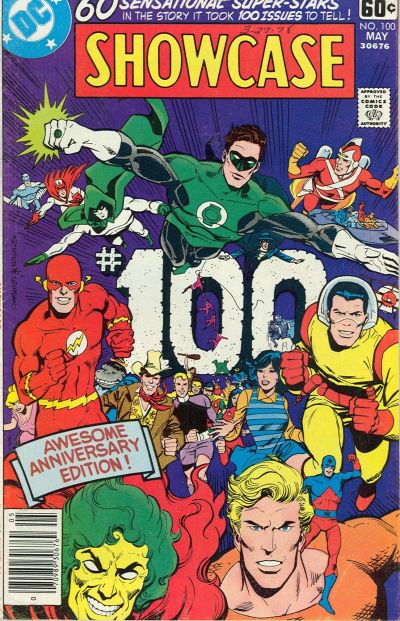
Before there were company-wide, universe-spanning crossover-events That Would Change Everything Forever ™, some of the biggest occasions in comics were anniversary issues like the one pictured above. Showcase #100, published by DC in May 1978, was one such special issue. The story included every character every to be featured in the title, including Fireman Farrell from issue #1, before the title became a super-hero tryout book. If I recall correctly, there was some time-and-space-continuum-warping disaster that needed the response of all the heroes, but the ultimate savers-of-the-day were Lois Lane and Angel O’Day (from Angel and the Ape), with a little last-minute assist from the Phantom Stranger.
Well, I can't promise a visit from every character who has ever been featured in this blog, but this marks my 100th post, so I thought I would make it at least super-sized, if not super-special.
Movie review:
Fantastic Four: The Rise of the Silver Surfer
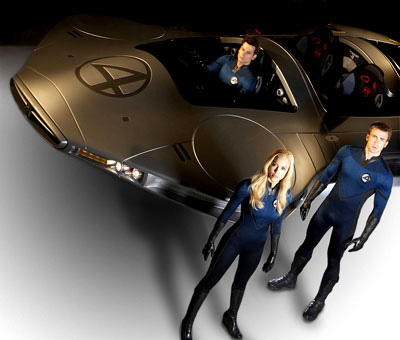
(minor spoilers)
I was one of the few people who actually enjoyed the first FF movie, as demonstrably bad as it was, so I went into the sequel both predisposed to like it and with low expectations. I was neither disappointed or surprised: I liked it, and it wasn’t very good.
It seems like the FF franchise is like the classic C-student in one of my classes. I don't dislike him: he works consistently, shows up most of the time, and turns in assignments regularly. It’s just that his work is always average: uninspired, unimaginative, and unexceptional; he tries hard enough, but just doesn't have what it takes to really shine, at least not in class. Similarly, the FF movies go through the motions, have all the right elements, and project a positive attitude; they just never get past being merely okay and enter the great (or even good) category.
Some pluses in this film: Reed Richards is portrayed as both a genius and a leader; Johnny Storm acts both annoying and admirably; The Silver Surfer is cool in both body and voice; the Fantasticar by Dodge is cute; we get to see Dr. Doom on the silver surfboard; there are decent action sequences.
Some specific minuses: Sue Storm is portrayed not as a smart scientist but as a flighty girl preoccupied with a “perfect wedding” and a “normal marriage”; Ben Grimm wears oversized clothes as the Thing, detracting from his inhuman appearance; the Galactus appearance is a cheat; the crappy technobabble is annoying; there's pedestrian acting all around and uninspired direction; and there's way too much Stan Lee (remember, a little goes a long way).
Overall, I enjoyed in the same way I would enjoy reading an old 80-page giant: mostly in spite of itself.
Graphic Book Review:
Halo and Sprocket, Volume 1: Welcome to Humanity
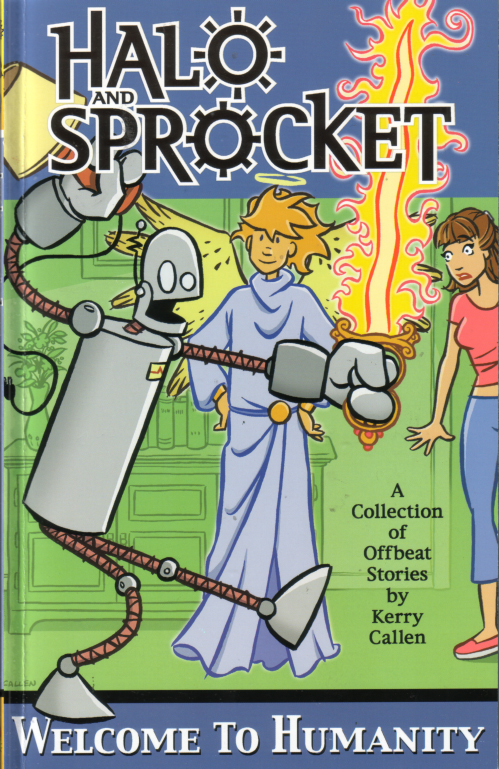
I mentioned this book in one of my earliest posts, but it has taken me this long to find a copy and read it all the way through. A sincere word of advice to you: don't be the dolt that I was. Run, don't walk, to your LCS, or jump online and order this book right now. It is one of the most charming trade paperbacks you’ll encounter.
Halo and Sprocket are, respectively, an angel and a robot who live with a young woman named Katie. Halo is helping Sprocket learn about people and develop as an individual, but is often distant from humanity himself and needs Katie’s perspective. No back story is given as to how this arrangement came about; it just is.
The circumstances lead to hijinx, of course: wordplay, misunderstandings, and even slapstick punctuate the lessons and inquiries. Kerry Callen builds a world that is both real and whimsical, with characters that are round and rich in situations that are totally plausible while being completely unrealistic.
The book is light-hearted and humorous, but Callen reveals from time to time that there is a real wisdom and search for truth going on in the strip. Here’s Sprocket responding to Katie’s demonstration of the hoary glass-half-full question:
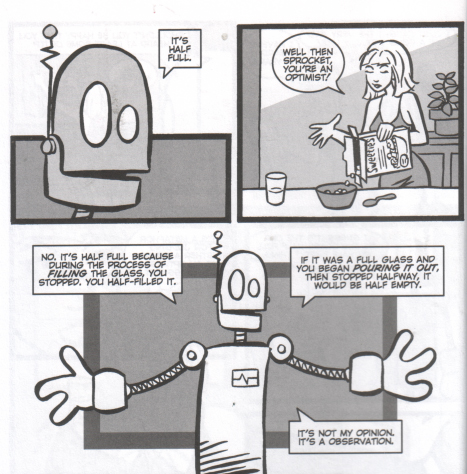
And here’s Halo coming upon the ancient Egypt display at the natural history museum:

I am so going to work this text into my critical thinking lessons.
I wish I had acquired this book a year ago, because I would now be on my twelfth read instead of my second. Go get it right away.
Halo and Sprocket, Volume 1: Welcome to Humanity by Kerry Callen. Published by Amaze Ink (a division of Slave Labor Graphics) in 2002 and 2003. Collects issues #1 through #4 of Halo and Sprocket and includes additional material.
Graphic Book Review:
The Plain Janes
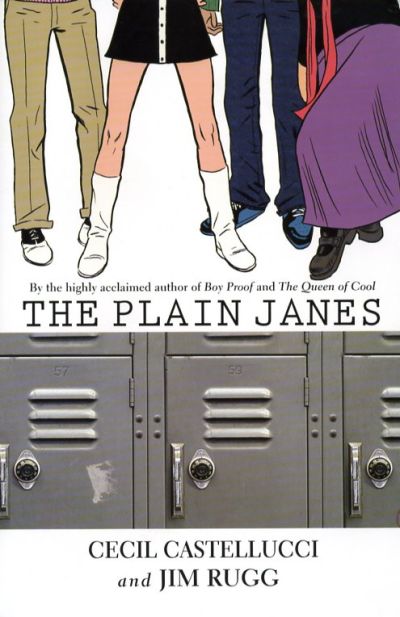
I had high hopes for this book. I was interested in the whole Minx line from DC and wanted it to be good: as I have said before, I think the more viable diversity there is available in comics, the better off the form will be. This particular offering, a high school drama, appealed to me the most, and I went into it wanting to like it. Unfortunately, it let me down.
Cecil Castellucci is an apparently big-name indie-punk author who was brought over from “real books” to write this graphic novel; Jim Rugg provides the art. Unfortunately, Castellucci’s story disappoints, and I don’t think it’s because of the transition from prose to comics. The book seems to work on a formal level; there’s not a lot of experimental or exciting graphic work going on, but it’s good straightforward story telling, like a Ron Howard movie as opposed to a Brian DePalma film. It's just that the story never seems to click together. The characters’ motivations seem unclear or underdeveloped, the plot developments often implausible or off-key, and the narrative arc stumbling and ultimately unsatisfying. There are a number of important themes in the book, but they never cohered for me into any unified message.
That said, I gave the book to my significant other, who is both a female person and an artist, and she loved it. And she isn't a comic reader, so maybe the book did meet its goals with others, and it's just me who doesn't get it.
In any event, I still applaud Minx and I will give another of their titles a try.
The Plain Janes by Cecil Castellucci and Jim Rugg. Published by DC Comics in 2007.
A meme
I usually don't respond to this kind of meme, but I was tagged by RAB at Estoreal, and my esteem for him is so high, and my pleasure at being seated at the same table with The Fortress Keeper is so great, that I have succumbed. Here it is:
I have to post these rules before I give you the facts.
Each player starts with eight random facts/habits about themselves.
People who are tagged need to write their own blog about their eight things and post these rules.
At the end of your blog, you need to choose eight people to get tagged and list their names.
Don’t forget to leave them a comment telling them they’re tagged, and to read your blog.
1. I don't own a pair of jeans and haven't in more than ten years.
2. I have never broken a bone*, had a stitch, or spent a night in the hospital.
3. It took just shy of 27 years to go from my first day of college to my being awarded a bachelor’s degree. On the other hand, it took me just eleven months to obtain my master’s.
4. I had a hamster named Henry. When I was 42.
5. I once drove from NYC to Chicago with my girlfriend and her friend and her friend’s boyfriend in a Buick Estate Wagon. We dropped him off at the University of Chicago, had some pizza, and drove back home.
6. I was a police offer for almost six years and in all that time I managed to avoid ever having to help carry a dead body. It became sort of a game with me; I would watch the M.E. out of the corner of my eye and make sure that I was otherwise occupied when he would look around for a hand wrangling the corpse into the van.
7. When Frank Gorshin appeared in a commercial for the Batman TV show, another neighborhood kid challenged me to name the character he was playing. I bluffed and called him “Mr. Question Mark” as if I knew what I was talking about. I was wrong, of course; the kid knew it was The Riddler. I had no idea who the character was.
8. When I was in high school and we were applying to colleges, I wrote to the University of Iceland in Reykjavik asking how I could apply to their school. I think we had just been reading the Elder Edda or something. I got back a very nice letter that basically told me to get lost. It made it clear that they only infrequently accepted foreign students, and that I should attend a U.S. college for two years first, and that if eventually accepted I would take only Icelandic History and Icelandic language instruction for the first year, and that all further classes would be taught in Icelandic. I didn't apply. Thirty years later I visited Reykjavik and went to the University. Three-quarters of the books in the bookstore were in English.
*I might have broken a pinky-toe bone once, but that doesn’t really count.
Tagged: Marionette, Ami Anglewings, Irate Canadian Lass, Capt. Infinity, Bully, Katherine, Steve, Skipper Pickle.
Thanks for a great ride through the interweblogosphere. This has been a voyage of discovery for me, and the best thing I have discovered so far is a community of bloggers who care about comics and can speak about them articulately but who at the end of the day don't take all this sturm and drang too, too seriously. After all, to paraphrase a little stuffed bull, "comics blogging should be fun!"
